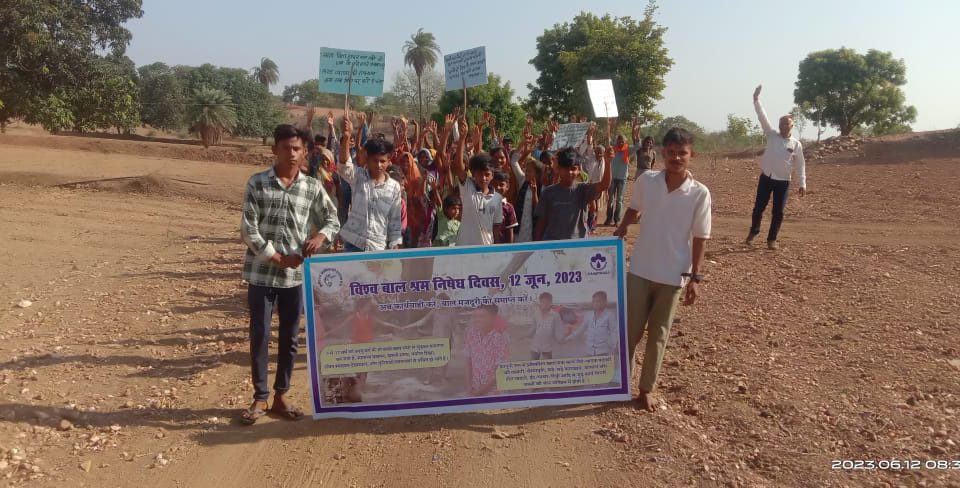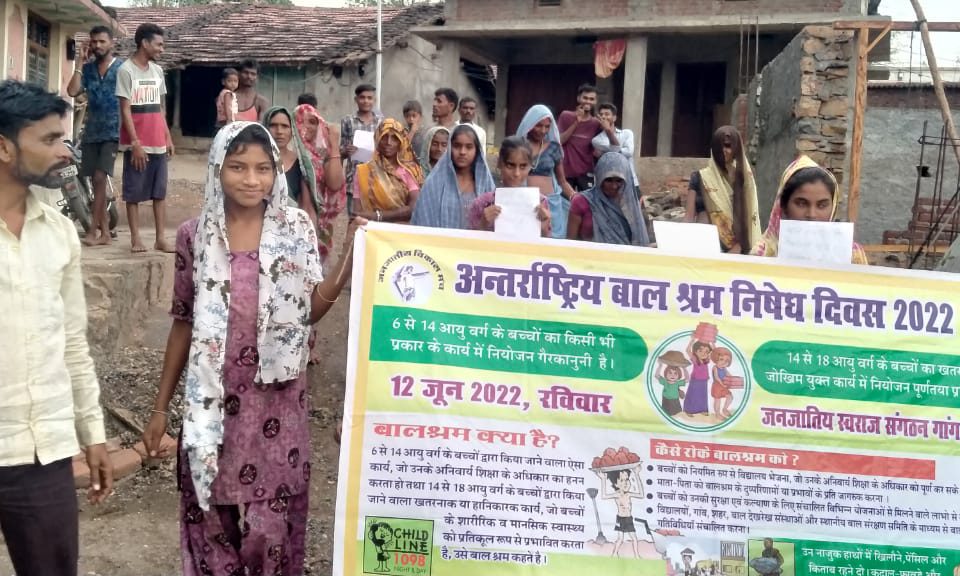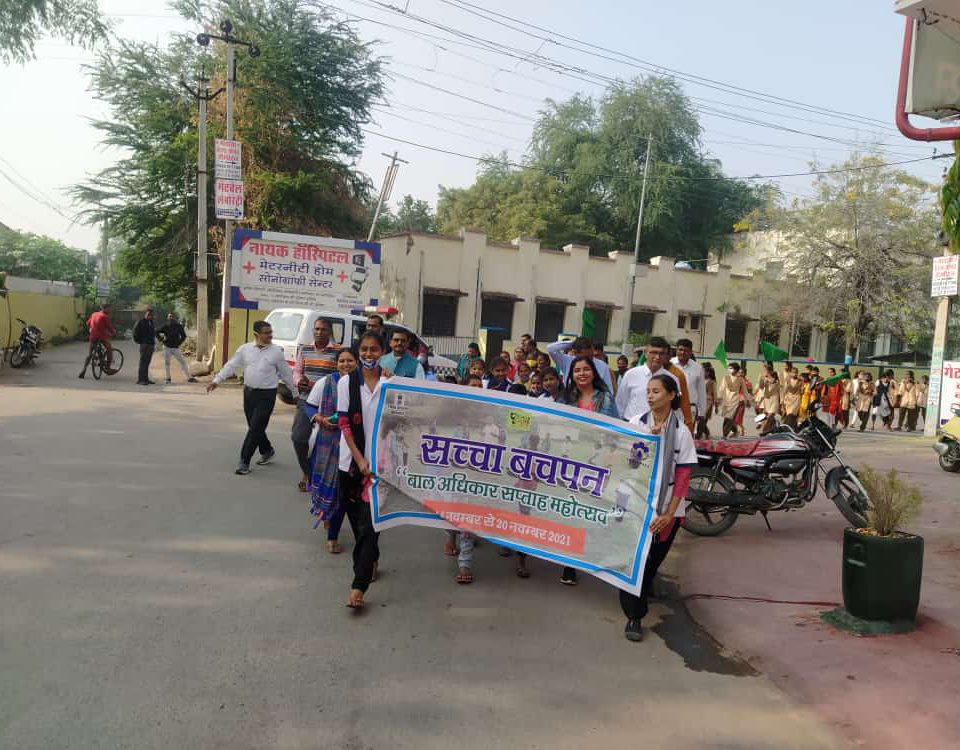
Vaagdhara organized “Baal Sabha” in Kanda panchayat on Children’s day.
November 14, 2016
Child Rights Education Program by Vaagdhara and Save the Children organization
November 17, 2016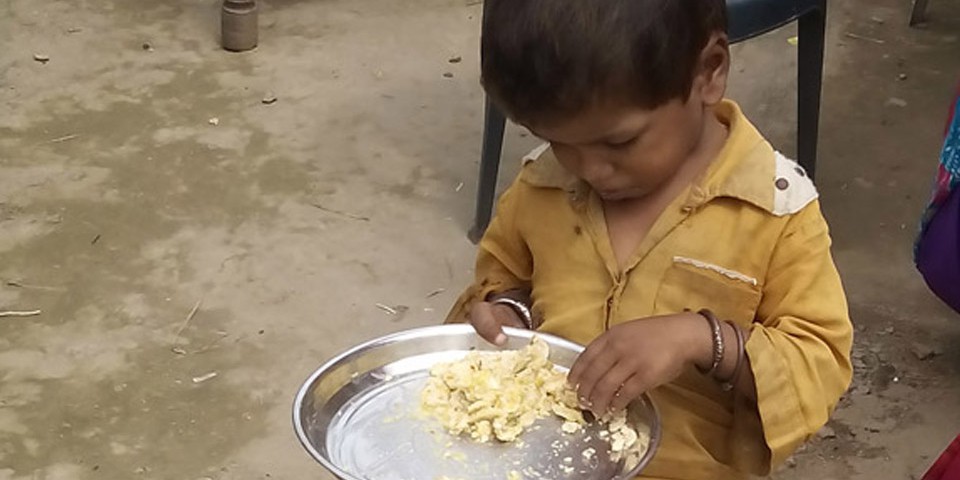
Vaagdhara reports "Merely depending upon ICDS Centers is not a solution to reducing malnourishment"
Serious signs of malnutrition are on the rise, even under Integrated Child Development Services
Child malnutrition rates in India are extremely high, with nearly 50% of all children under the age of three being either underweight, skinny, or short. In fact, the rates of child malnutrition are higher in India than many countries of sub-Saharan Africa - given the per capita income in India is significantly higher and child mortality lower.
Such high prevalence of malnutrition is even more in the poor rural areas. Vaagdhara has been actively working for the betterment of children in the Tribal regions of Southern Rajasthan, where almost 50.6% of children comes under the malnourished category. Despite of many ICDS schemes in the region to tackle malnutrition and health problem, the issues still persist.
Vaaghdhara carried out a research to identify the effectiveness of the Integrated Child Development Services (ICDS) programs in addressing the challenge of malnutrition in children in South Rajasthan. The ICDS is considered as one of the largest nutrition schemes in the world, but government investments and proper measures are still found wanting. The study finds out that although ICDS program appears to be well-designed, and that the centers are working hard to combat malnutrition, it is still not just enough to reduce the figures of the malnourished. There are several disparities between the designed schemes and their actual implementation which ultimately prevent them from achieving what is aimed.
Undeniably, ICDS has got great potential to improve the nutritional status of Indian children, but it needs to overcome some challenges if this potential is to be realized. Here are some of the results of the study that show major incongruities between what an effective nutrition intervention should do and what ICDS is currently doing, preventing the program from achieving better results.

The above chart shows statistics from screening done in 44 villages of Anandpuri block where a total of 6268 children of 0-59 months of age are recorded. Out of them, 5527 are registered at AWC and 741 not registered. These 741 children were not linked with AWC but they were identified during screening and linked with Aanganwadi centers later. A total of 4051 children participated in the screening, while the remaining 2217 children were not found in villages, as they were migrated with their family where their parents do unskilled labor work. It was found that these 2217 children are not getting any facilities provided by the Anganwadi center.
Now if we look at the below pie chart, we see that out of the 4051 screened children, 27 percent children (1093 children) are identified as malnourished.
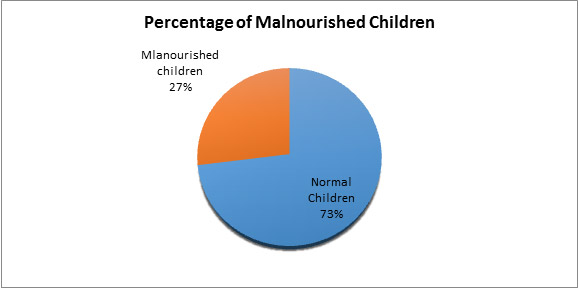
Further, these 1093 malnourished children were studied to find out who all are linked with AWCs.
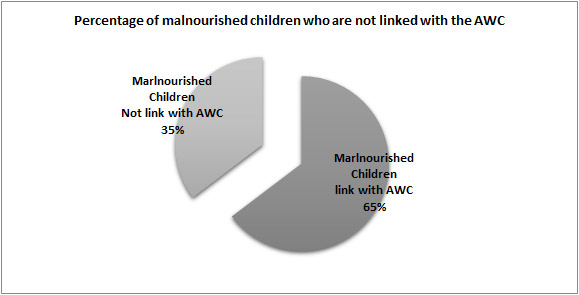
This graph shows that 35 % malnourished children are not linked with any AWC, and out of the planned six services, they are not getting any service or any supplement food.
During the research, it was also found that in these areas, Aanganwadi food is distributed through third party providers who provide THR (Take Home Ration) to children as one packet once in a month, which is denying to the actual guidelines that say that the THR should be provided on every Monday to the child and the lactating mother.
Vaagdhara, with this study aims to bring in light the gaps in policy made and its implementation, and expects from the regulatory bodies to help in the betterment of these poor tribal children. Integrated Child Development Services (ICDS) are definitely helping combat hunger and malnutrition, but an informed strategy and a regular check of the policy being implemented at each levels is highly needed. Also, only depending upon ICDS is not the only solution to the problem.
The supply of ready-to-eat foods given through ICDS centers has been substituting locally procured and prepared food for children, pregnant women and lactating mothers. A holistic approach is much needed in this scenario – a good measure is livelihood enhancements to improve food security for these poor Tribals. Empowering small farmers, tackling climate change, encouraging sustainable agricultural practices and locally produced food, including both production and consumption, must be followed from an integrated perspective. Promoting and investing in local food systems is critical to preventing large-scale shortage of nutritional food in rural areas and to ensuring food security for all.
VAAGDHARA is promoting livelihood improvement and Food and Nutrition security, through Sustainable Integrated Farming System-SIFS, Nutrition Sensitive Farming Systems, Horticulture Development, Watershed Management, Community Lift Irrigation System, Micro Finance and policy advocacy for realization of people’s right to Livelihood with approximately 17,000 farm families.
We encourage taking a holistic view and not only depending on the ICDS centers to address issues of hunger, and malnutrition. Hunger levels can’t come down by merely sitting and expecting it all from ICDS, let’s face this challenge maturely and act wisely.
Subscribe to our newsletter!


